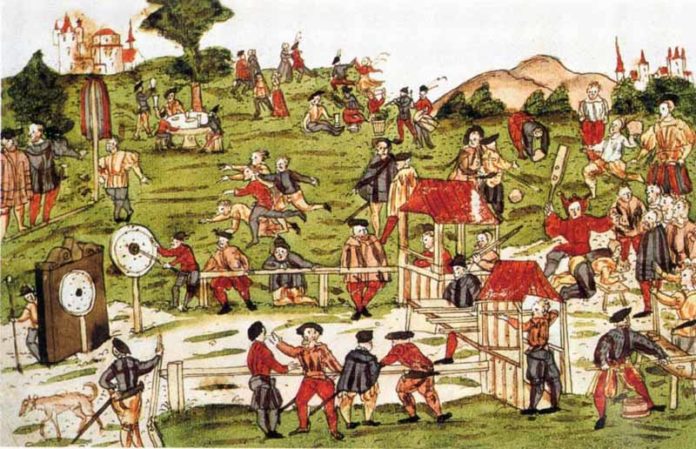The training of the medieval archer and the use of the longbow and crossbow in medieval European warfare.
The archer was a valued soldier in the medieval age and, when working with a team of archers, could change the outcome of a battle in a matter of minutes. Before gunpowder was widely used, the longbow and crossbow were among the most deadly weapons available to a medieval soldier.
Medieval Warfare
Archery was an essential part of medieval warfare, where much of the fighting was done hand to hand. A trained archer could down a horse and kill several soldiers with just a few arrows. Even when greatly outnumbered, a group of highly trained archers could each fire around a dozen arrows a minute, with such speed and accuracy hundreds of men could be killed and injured within minutes.
The bow and arrow has been used as a hunting and fighting weapon for at least 5,000 years in mainland Europe. But it was in the Middle Ages that archers were used to great effect. Both the crossbow and longbow were inexpensive, being made from materials which were easily to obtain. Both weapons were fashioned from yew, ash, hazel or elm.
The Longbow
There were two main types of weapon used medieval archers; the longbow and the crossbow. Historians still debate which was the superior weapon, but either could cause devastation on a battlefield.
The longbow was used in medieval mainland Europe, but was particularly popular in England. Archers using longbows are depicted on the 11th century Bayeux tapestry and use of the longbow by fighting forces at major battles including the battles of Crecy (1346) and Agincourt (1415) led to decisive English victories over French armies.
A longbow was at least five feet long, and was supposed to be at least as tall as the person firing it, for maximum aim and range. Although the longbow was a powerful weapon, it was only really effective when used by a highly-trained archer. To pull back the bow took considerable strength, and the weapon also had to be aimed accurately and another arrow loaded within seconds of the first arrow being fired.
A professional longbow archer would have trained for many years, usually from childhood. Many villages had their own butts, where villagers could practise their archery regularly. Once fully trained, a longbow archer was a valuable soldier and if caught in battle, was often ransomed for a large sum, rather than being killed.
The Crossbow
The crossbow was an easier weapon for an untrained person to use. Although large crossbows did exist in medieval times, the most common was a handheld bow, which didn’t require the huge strength needed to shoot a longbow. Unlike the longbow, the crossbow could be loaded with an arrow in advance of firing. The bow was mounted on a stock, and so could be held in place until a trigger was pushed to release a bolt.
There are medieval examples of large crossbows, as tall as a man, but these were heavy and difficult to transport. A smaller crossbow could be carried and used easily by a single soldier, with no need for assistance.
The Archer in Medieval Warfare
Archers seem to have been people of a fairly ordinary class in life who practised continually until they were good enough to hire themselves out as soldiers. Although the archer was a highly prized fighter, most individuals seem to have come from ordinary families, rather than from the nobility.
An archer was very vulnerable on the battlefield, despite the danger he presented to his enemies. The main risk to anyone shooting a longbow or crossbow was the time it took to load an arrow, take aim and fire, during which the soldier was defenseless. The archer often carried a short sword for defense or was placed behind a defense wall of soldiers armed with swords and protected with shields.
The development of gunpowder in weaponry gradually brought an end to the use of the longbow or crossbow. Explosives, rather than hand-held weapons were used in battles and sieges and the bow and arrow were consigned to popular legend, such as the stories of Robin Hood.
Sources:
- Bradbury, Jim The Medieval Archer, Boydell Press,2006
- Todd Carey, Brian Warfare in the Medieval World, Pen and Sword,2006








